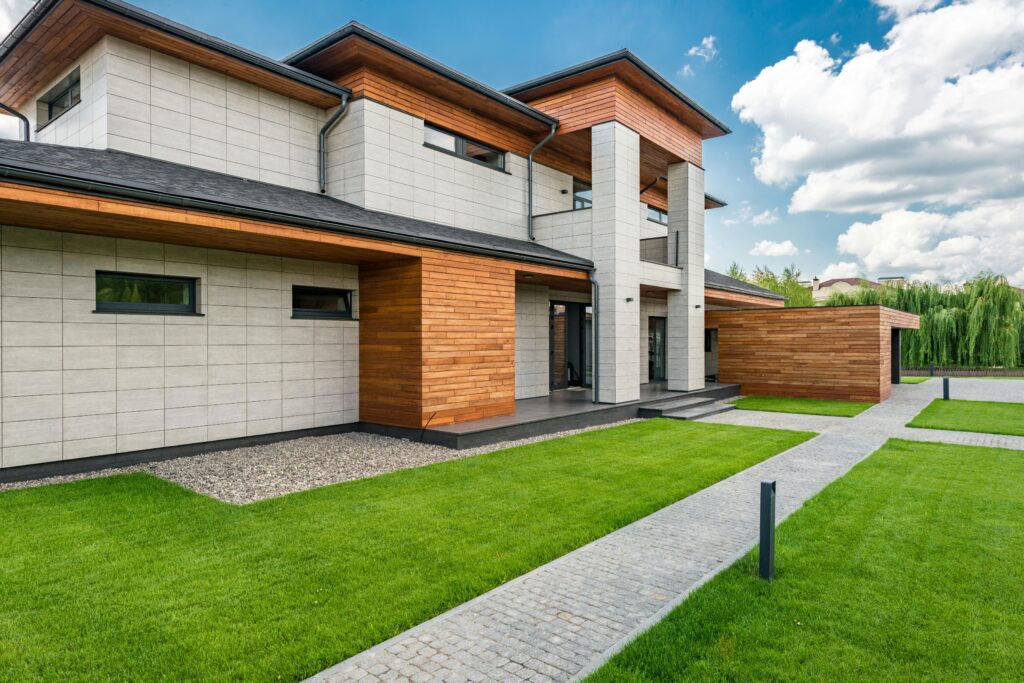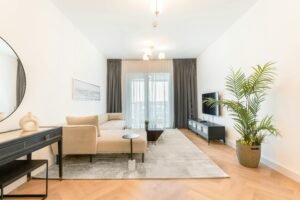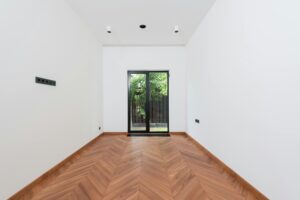Artificial grass has revolutionized the landscaping industry, offering homeowners and businesses a cost-effective and environmentally-friendly solution for beautiful lawns. Whether you are considering it for your home, office, or public space, artificial grass can provide the aesthetic appeal of natural grass with far less effort and maintenance. In this article, we will explore everything you need to know about artificial grass , its benefits, installation process, and how it can enhance your outdoor space.

What is Artificial Grass?
Artificial grass, also known as synthetic turf, is a man-made product designed to resemble natural grass. It is usually made from durable materials like polyethylene or polypropylene, which mimic the look and feel of real grass. Artificial grass is used in various applications, from residential lawns to sports fields and commercial landscapes.
The technology behind artificial grass has advanced over the years, leading to more realistic and high-quality products. Modern synthetic grass is designed to be UV resistant, making it durable enough to withstand the harshest weather conditions. Whether you live in a hot desert climate or a rainy region, artificial grass remains vibrant and functional year-round.
The Benefits of Artificial Grass
There are numerous advantages to choosing artificial grass over natural grass. Here are some of the key benefits:
1. Low Maintenance
One of the most significant benefits of artificial grass is that it requires minimal maintenance. Unlike natural grass, which needs regular mowing, watering, and fertilizing, synthetic turf only needs occasional cleaning. No more spending hours cutting grass or worrying about watering schedules during dry spells. With artificial grass, you can enjoy a pristine lawn without the hassle of constant upkeep.
2. Water Conservation
Water scarcity is a growing concern in many parts of the world. By switching to artificial grass, you can significantly reduce your water usage. Natural lawns require large amounts of water to stay green and healthy, especially in dry climates. Artificial grass, however, does not need watering, which means you can contribute to water conservation efforts while still enjoying the beauty of a green lawn.
3. Year-Round Beauty
Artificial grass remains lush and green throughout the year, regardless of the weather. Whether it’s a scorching summer day or a frosty winter morning, synthetic grass keeps its appearance intact. This is particularly beneficial for people living in areas with extreme weather conditions, as natural grass often struggles to survive under such circumstances.
4. Safe and Durable
Artificial grass is made from non-toxic materials, making it a safe option for families, pets, and children. It is designed to withstand heavy foot traffic, making it ideal for high-use areas like playgrounds, sports fields, and patios. Unlike natural grass, which can become patchy or muddy under heavy use, synthetic turf stays intact and retains its appearance over time.
5. Aesthetic Appeal
Artificial grass provides a flawless, uniform appearance. No more dealing with unsightly brown patches, weeds, or uneven grass growth. With synthetic turf, you can achieve the perfect, manicured look that you desire for your lawn, garden, or outdoor space.
Different Types of Artificial Grass
Not all artificial grass is created equal. There are various types of synthetic turf available, each designed for different purposes. The most common types include:
1. Residential Artificial Grass
Residential artificial grass is designed for home lawns, gardens, and patios. It is soft and luxurious underfoot, mimicking the look of natural grass while offering superior durability. Many residential options come in different pile heights and densities, allowing homeowners to choose the perfect turf to match their aesthetic preferences.
2. Sports Turf
Sports turf is specifically designed for sports fields, such as football, soccer, and golf courses. It is engineered to withstand heavy foot traffic and provide a consistent playing surface. Sports turf often features short, dense fibers to support optimal performance and prevent injuries during play.
3. Pet-Friendly Artificial Grass
Pet-friendly artificial grass is made with pets in mind. It is designed to be more resilient and resistant to odor, stains, and damage caused by pet activity. Many pet-friendly synthetic grass options are equipped with a drainage system to ensure quick drying and prevent the buildup of bacteria.
4. Commercial Turf
Commercial artificial grass is designed for high-traffic areas such as shopping centers, office complexes, and public spaces. This type of turf is made to withstand constant use and maintain its appearance over time, even in high-exposure environments.
Installing Artificial Grass
The installation of artificial grass is relatively straightforward, but it requires careful preparation to ensure a long-lasting, high-quality result. Here’s an overview of the installation process:
1. Site Preparation
The first step in installing artificial grass is preparing the area. This involves removing any existing grass, weeds, or debris from the site. It is also important to level the ground and ensure proper drainage to prevent water from pooling on the surface.
2. Laying the Base
Once the area is cleared, a base layer of crushed stone or gravel is applied. This layer is designed to provide stability, support proper drainage, and prevent the turf from shifting over time. A weed barrier fabric is often laid on top of the base layer to keep weeds from growing through the artificial grass.
3. Rolling Out the Turf
Next, the synthetic grass is unrolled and laid out over the prepared base. The turf should be cut to fit the shape of the area, ensuring that the seams are aligned properly. Some artificial grass products come with pre-cut edges to make this process easier.
4. Securing the Turf
After the turf is laid out, it is secured with nails or staples to keep it in place. The edges are also glued or taped to prevent the turf from lifting over time. It’s essential to ensure that the artificial grass is tightly stretched to avoid wrinkles or sagging.
5. Infill and Brushing
Finally, an infill material such as sand or rubber granules is spread over the turf. This helps weigh the grass down, adds stability, and protects the fibers from wear. After the infill is applied, the grass is brushed to lift the fibers and give the lawn a natural, upright appearance.
Artificial Grass for Various Applications
1. Residential Use
Artificial grass is an ideal solution for homeowners who want to create a beautiful, low-maintenance lawn without the hassle of regular care. Whether you’re interested in creating a backyard oasis, a safe play area for kids, or a decorative garden, artificial grass provides the perfect foundation.
2. Commercial Use
Businesses can also benefit from the use of artificial grass. From hotels and resorts to shopping centers and office buildings, synthetic grass creates a visually appealing environment with minimal upkeep. It also reduces costs related to lawn maintenance, water usage, and fertilization.
3. Sports Fields and Recreation
Artificial grass is commonly used in sports fields because it provides a consistent playing surface that doesn’t require constant maintenance. Soccer, football, baseball, and golf courses can all benefit from synthetic turf, ensuring that athletes have a safe and reliable playing surface.
4. Pet Areas
Pet owners can create a pet-friendly outdoor space using artificial grass. Not only is it durable and easy to clean, but it also offers a comfortable surface for pets to play on. Additionally, it eliminates muddy patches and reduces the mess that comes with traditional grass lawns.
Is Artificial Grass Worth the Investment?
While the initial cost of installing artificial grass may be higher than maintaining a natural lawn, the long-term benefits make it a worthwhile investment. Over time, artificial grass can save you money on water bills, lawn care products, and maintenance costs. Additionally, it offers significant environmental benefits by conserving water and reducing the need for harmful pesticides and fertilizers.
Conclusion
Artificial grass offers a practical and aesthetically pleasing solution for homeowners, businesses, and public spaces. With its low maintenance requirements, water conservation benefits, and year-round beauty, synthetic turf is quickly becoming the go-to option for anyone seeking a flawless lawn without the hassle of traditional grass care.









